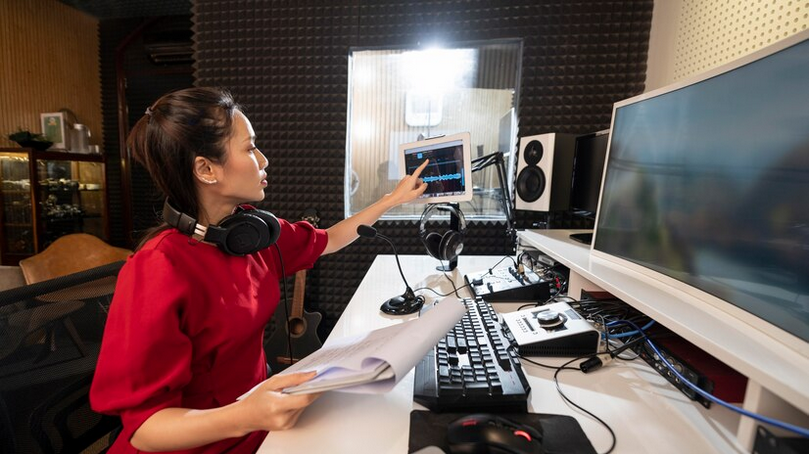Audio visual operations Consulting represent a critical facet of modern businesses, encompassing a broad spectrum of technologies and methodologies that serve as the backbone for effective communication, collaboration, and presentation. In today's competitive landscape, the role of audio-visual solutions has evolved beyond mere convenience to become a strategic necessity, shaping the way organizations interact, engage, and present themselves to both internal and external stakeholders. A consulting perspective on audio-visual operations becomes pivotal in harnessing the full potential of these technologies, ensuring optimal utilization, seamless integration, and strategic alignment within an organization's framework.
Understanding the Landscape of Audio-Visual Operations
The audio-visual landscape comprises a diverse array of technologies, including video conferencing systems, digital signage, sound systems, interactive displays, and more. These technologies are no longer confined to boardrooms or conference halls; they permeate all levels of operations, supporting remote work, training, marketing, and customer engagement. The convergence of audio-visual technology with IT infrastructure has further broadened its scope, integrating these solutions within the fabric of an organization's network, and necessitating a holistic approach to their management and utilization.
The Role of Consulting in Optimizing Audio-Visual Operations
Consulting in audio-visual operations involves a comprehensive evaluation of an organization's needs, existing infrastructure, and future goals to design, implement, and manage the most effective audio-visual solutions. This process entails several key elements:
Assessment and Strategy: Consultants conduct an in-depth assessment of an organization's requirements, considering factors like space utilization, communication needs, scalability, and budget constraints. They then devise a strategic plan that aligns with the organization's objectives, ensuring that the selected audio-visual solutions are not only technologically sound but also aligned with the company's overarching goals.
Integration and Implementation: Once the strategy is in place, consultants oversee the seamless integration of audio-visual technologies within the existing infrastructure. This involves coordinating with various stakeholders, managing installations, and ensuring compatibility with other systems to guarantee a smooth and effective implementation.
Training and Support: Beyond installation, consulting services often extend to training employees in utilizing these technologies optimally. This support ensures that the workforce is equipped with the necessary skills to leverage the audio-visual solutions to their full potential, thereby maximizing their impact on daily operations.
Benefits of Optimized Audio-Visual Operations
The successful implementation of a well-designed audio-visual strategy under the guidance of consultants can yield various benefits for organizations. Enhanced communication and collaboration are primary advantages, as these technologies facilitate seamless interaction among teams, regardless of geographical locations, fostering productivity and innovation. Moreover, improved presentations and meetings lead to better engagement with clients, partners, and employees, positively impacting decision-making processes and relationships.
Scalability is another advantage. As organizations grow, the infrastructure designed with scalability in mind can accommodate increased demands without significant disruptions. It also leads to cost-efficiency, as a well-structured audio-visual system ensures optimal utilization of resources and minimizes unnecessary expenses.
Challenges in Audio-Visual Implementation
While the benefits are substantial, challenges in implementing and managing audio-visual operations persist. These include compatibility issues between different systems, security concerns associated with interconnected technologies, and the need for ongoing maintenance and updates to keep pace with rapidly evolving technologies. Consulting services help address these challenges by providing expertise in system integration, security protocols, and ongoing support.
Conclusion: Unlocking the Potential
In today's fast-paced and dynamic business environment, the power of audio-visual operations cannot be underestimated. A consulting perspective plays a pivotal role in unlocking this power, ensuring that organizations harness the full potential of these technologies. By conducting a thorough assessment, devising strategic plans, overseeing implementation, and providing ongoing support, consultants enable businesses to leverage audio-visual operations as a competitive advantage. With the right guidance, organizations can optimize their audio-visual systems to foster better communication, collaboration, and overall efficiency, propelling them toward success in their respective industries.
The constant evolution of technology requires a dynamic approach, and consulting services offer the expertise needed to navigate these changes, making the most of audio-visual operations for enhanced organizational performance. As businesses continue to adapt and innovate, the strategic utilization of audio-visual technologies under the guidance of consultants will remain a cornerstone in achieving operational excellence and staying ahead in the competitive global landscape.





Comments